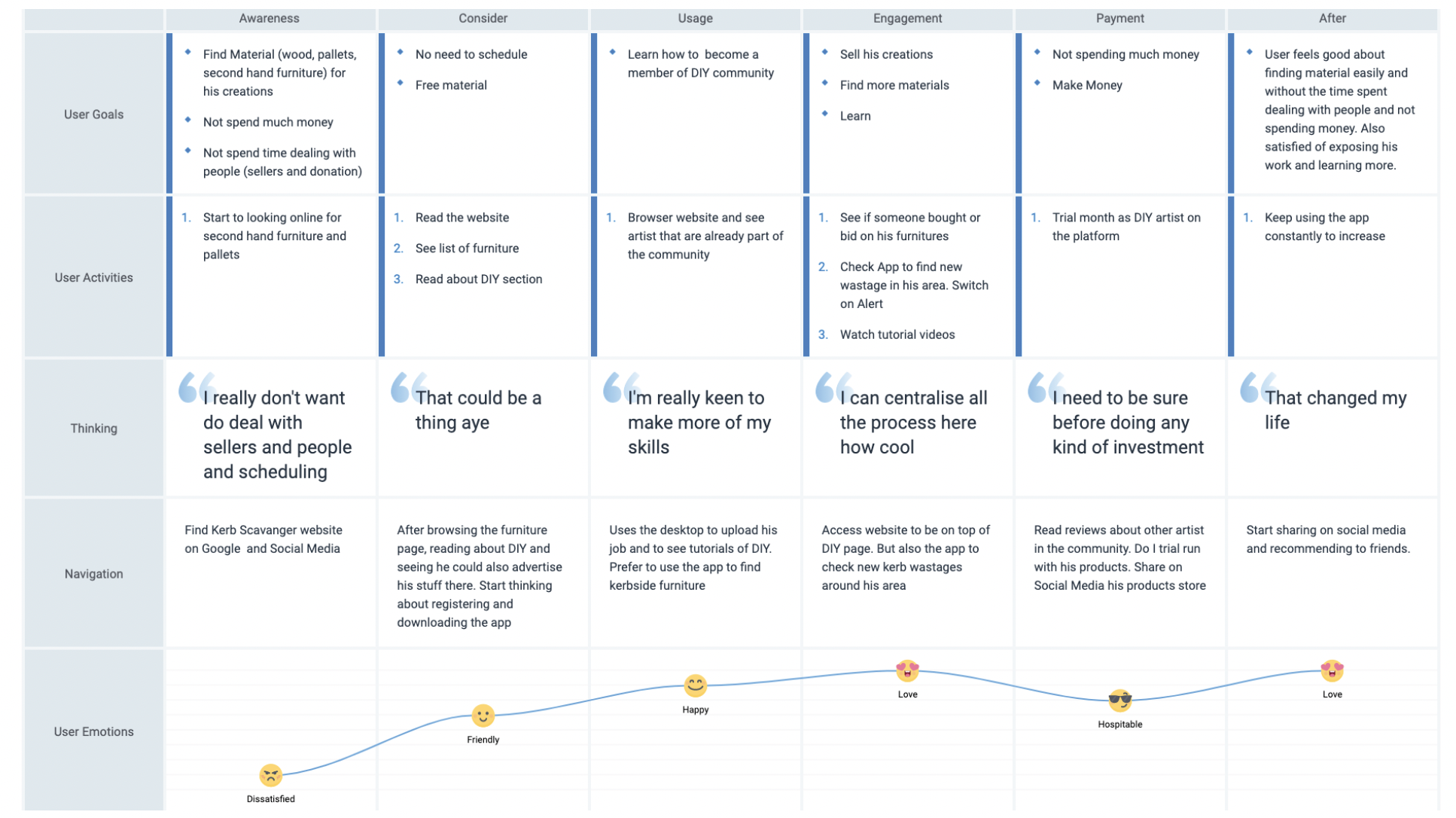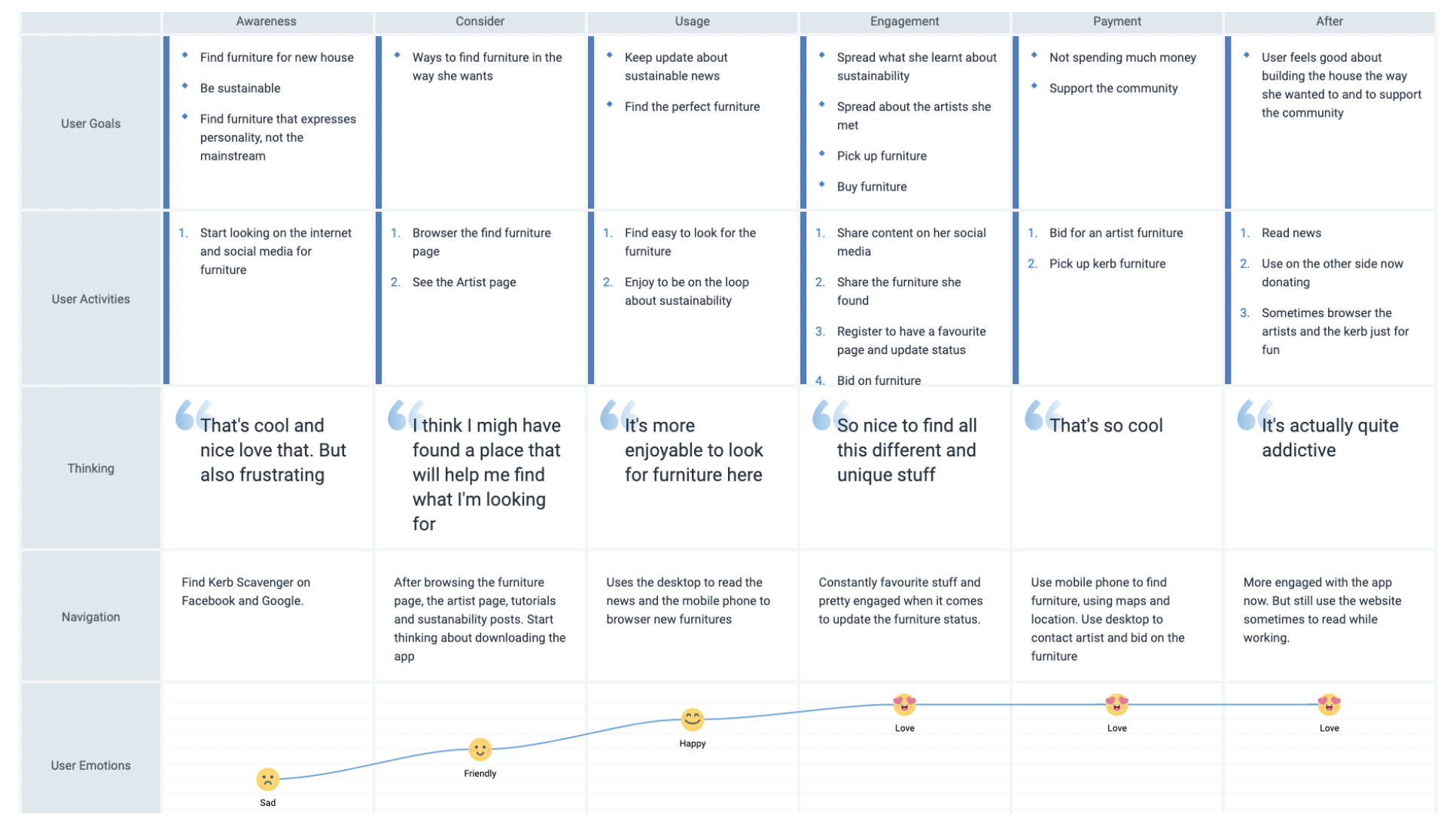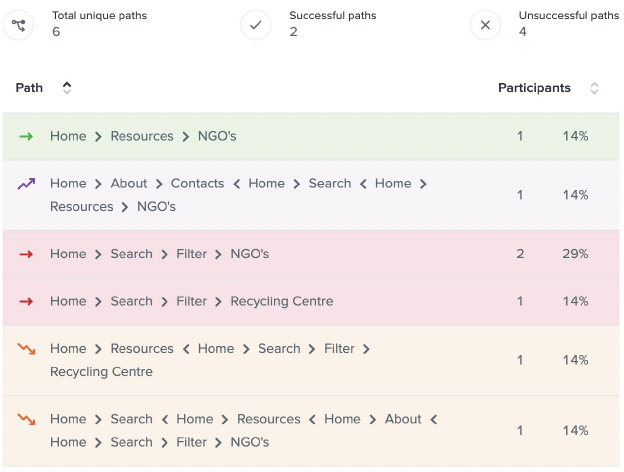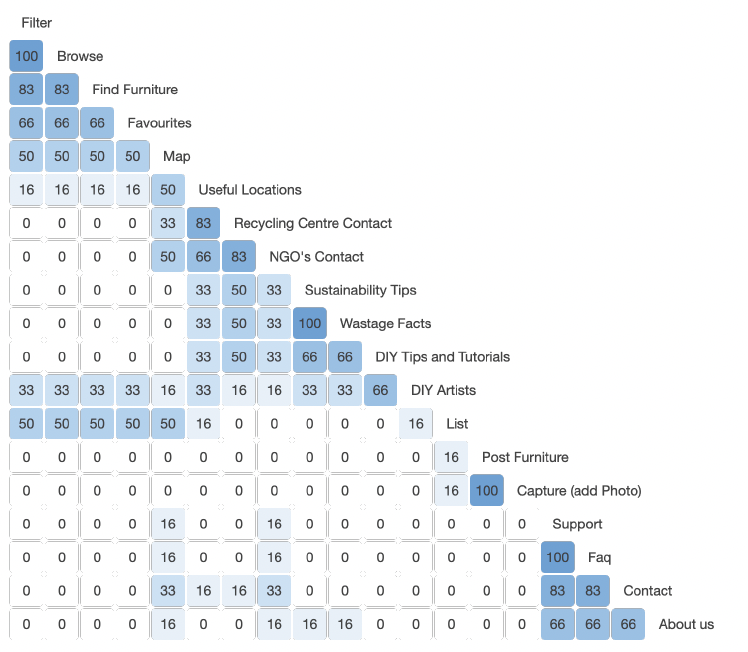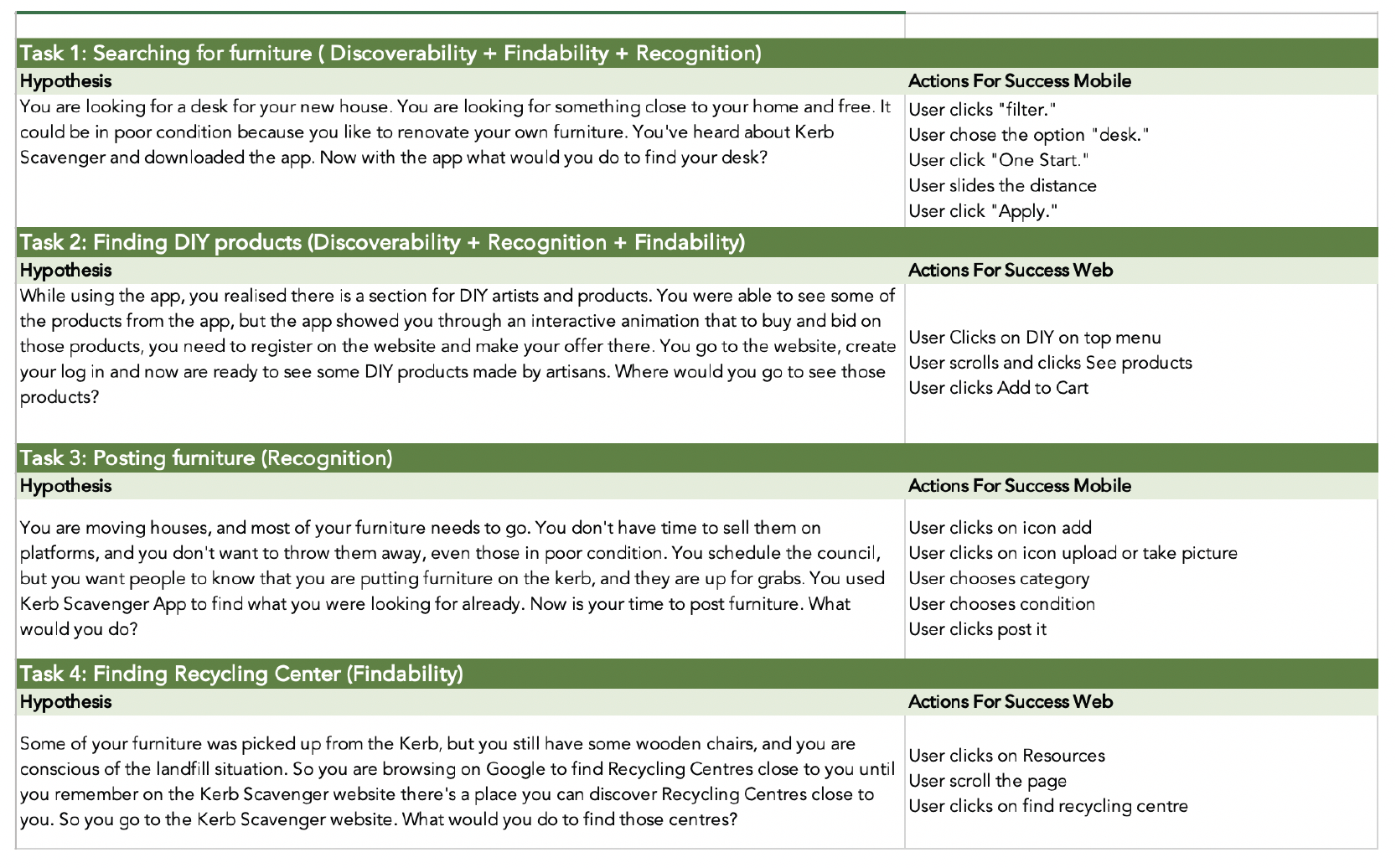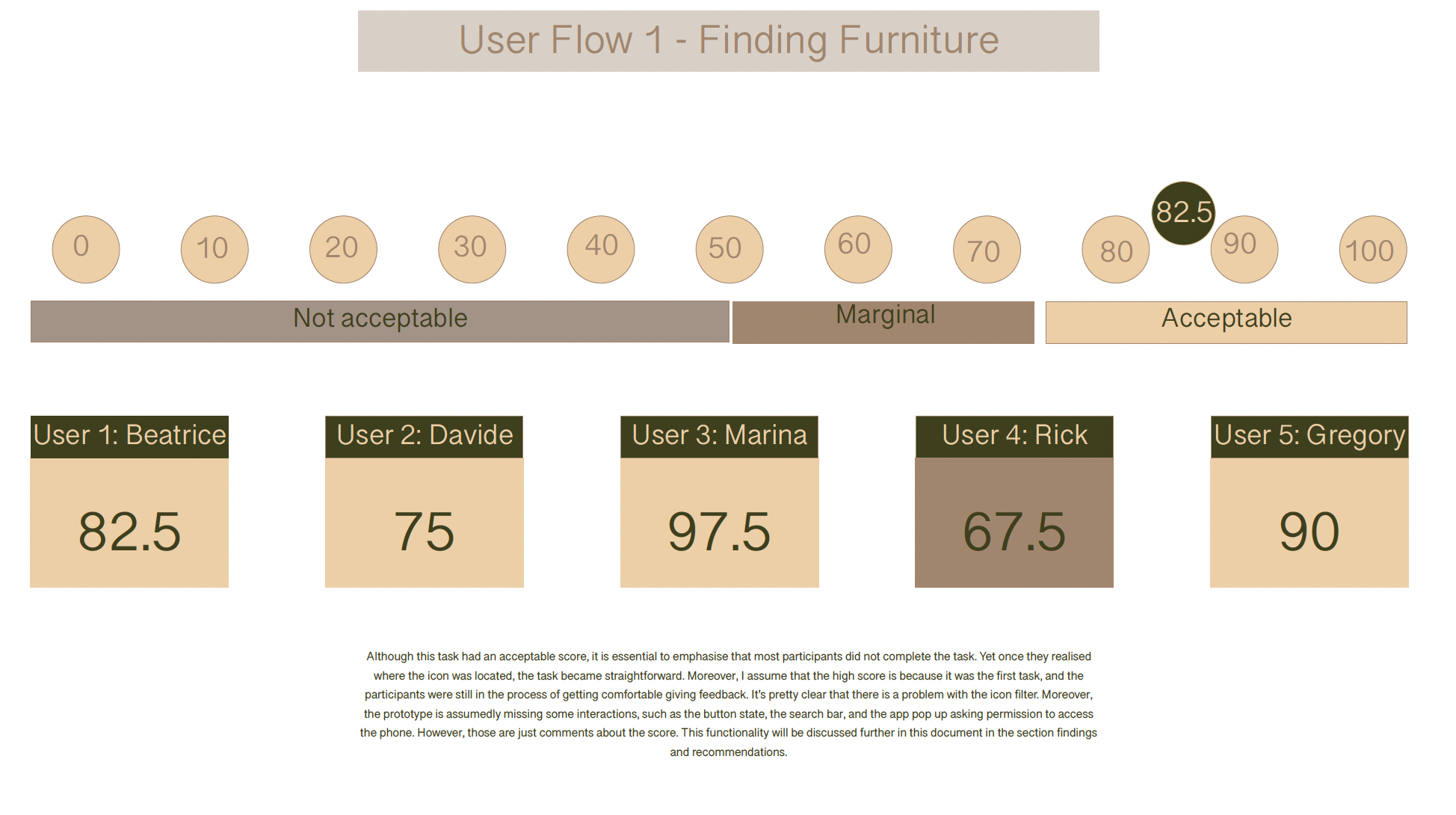Kerb Scavenger
UX/CX Research, Design Sprints, MVP, Prototype, User Testing
The journey of transforming an idea into a product.
The Problem
Kerb Scavenger is an authorial project that has been in work as a start-up. KS was idealised to tackle the growing number of disposal of used furniture at the kerbside and landfills, improving furniture reuse, facilitating donations and enhancing DIY culture. But what does this idea look like? Is there a need for this solution?
The Objective
Understand the current scenario, determine what is relevant for users, examine how to address users' needs and evaluate the design.
Approach
Social background research
Quantitative Research
Competitor Analysis
Personas
User Journey
Wireframes
Prototypes
User Testing (TreeJack - Card Sorting - A/B)
Solution Process
Due to the non-disclosure agreement, limited information can be provided.
Understand
What & Why? Listen…Analyse
Background Research
Research is a quest to learn new information, and it can be hard to find a starting place. We don't know what we don't know but doing background research gave us some important clues. Looking at the who, what, when, where, why, and how.
Quantitative Research
We started with surveys (quantitative) research to identify patterns, and averages, make predictions, causal test relationships, and generalise results to broader populations.
Competitor Analysis
The competitor analysis helped us to know the market, product and goals better. We also understood the competition and got actionable insights. With an almost limitless number of competitors out there all vying for attention, the heat was on to understand precisely what KS is doing right (or wrong) to create an effortless user experience and a product that people enjoy using.
Plan
Identify
Learn
Create
Identify
Personas
We then created personas, the archetypical users whose goals and characteristics represent the needs of a larger group of users.
User Journey
And then created a basic journey map to visualise the process the personas go through to accomplish a goal. It started by compiling a series of user actions into a timeline. Next, the timeline was flashed with user thoughts and emotions to create a narrative.
Learn
We then ran an Open Card Sorting technique to help us create an IA that suits the user's expectations. It enabled us to uncover how the target audience's domain knowledge is structured, and it served to develop the information architecture.
Open Card Sorting
Another test we used was the Tree Jack testing to evaluate the proposed platform structure. It gave us valuable insights into understanding where the users expected to find content in each section.
Tree Jack Testing
Create
Do-Go Map
Research is a quest to learn new information, and it can be hard to find a starting place. We don't know what we don't know but doing background research gave us some important clues. Looking at the who, what, when, where, why, and how.
Information Architecture
Similar to buildings, digital products require a solid foundation. We focused on organising, structuring, and labelling content effectively and sustainably. The goal was to help users find information and complete tasks.
Wireframes
We then created low-fidelity wireframes, a blueprint helpful for all involved to think and communicate about the structure of the solution.
Solve
Define
Apply
Test
Define
After defining the MVP, the product with enough features to attract early-adopter customers and validate the product idea, we created a table with Insight Statement, Needs, HMW and Hypothesis. We also created user flows based on the hypothesis.
Apply & Tests
And the prototype which we used to do the Usability Test using task scenarios that we asked the participant to take on the tested interface. For the test evaluation, we used Tasks Results and SUS.






